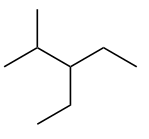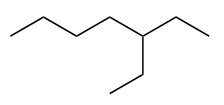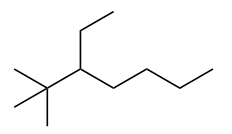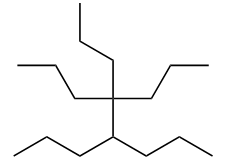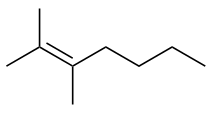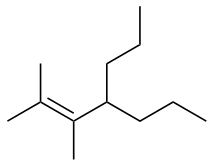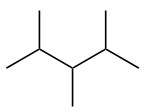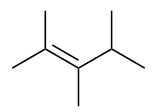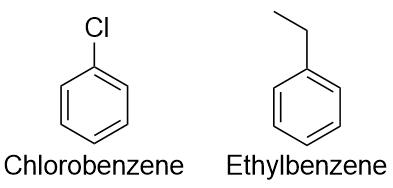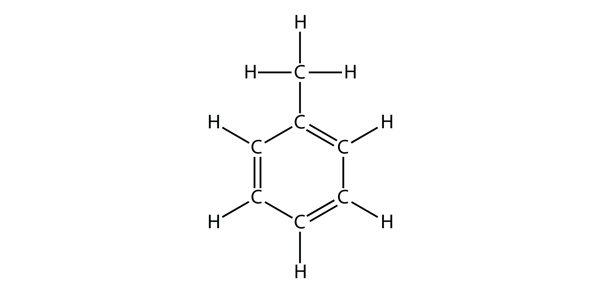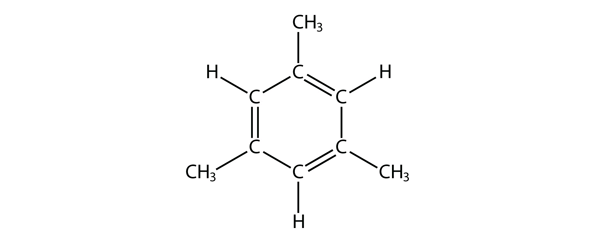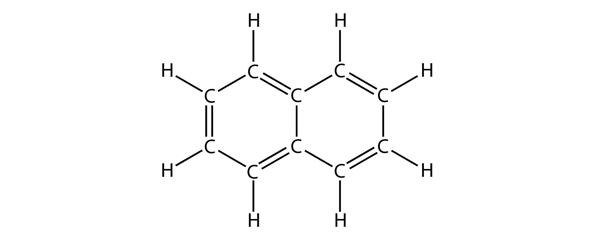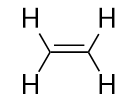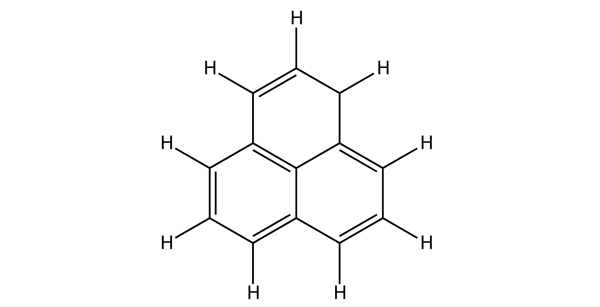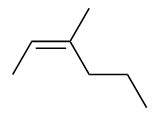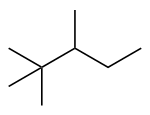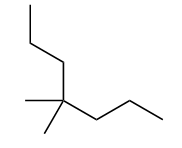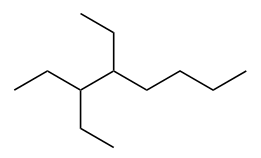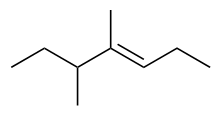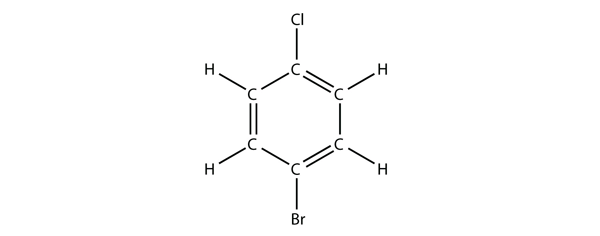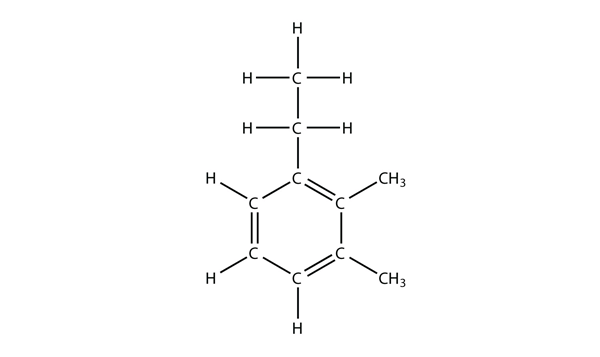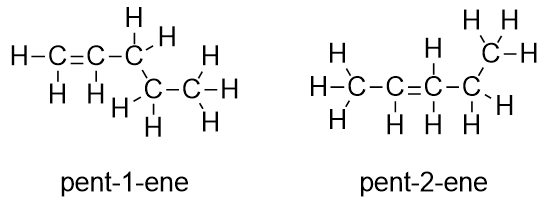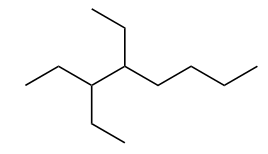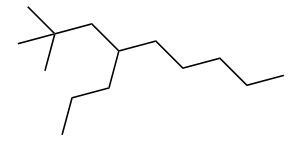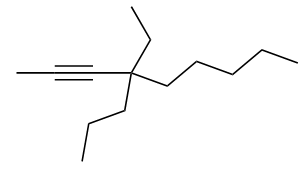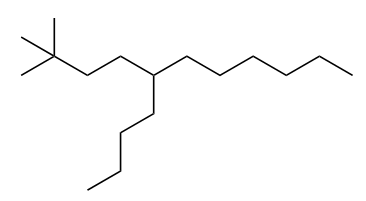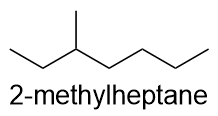Chapter 10. Organic Chemistry
10.3 Nomenclature of Hydrocarbons and Alkyl Halides
Learning Objectives
By the end of this section, you will be able to:
- Name saturated and unsaturated hydrocarbons and alkyl halides following the IUPAC rules
- From the name a saturated or unsaturated hydrocarbon or alkyl halides, draw its structure
The largest database[1] of organic compounds lists about 10 million substances, which include compounds originating from living organisms and those synthesized by chemists. The number of potential organic compounds has been estimated[2] at 1060—an astronomically high number. The existence of so many organic molecules is a consequence of the ability of carbon atoms to form up to four strong bonds to other carbon atoms, resulting in chains and rings of many different sizes, shapes, and complexities.
The simplest organic compounds contain only the elements carbon and hydrogen, and are called hydrocarbons. Even though they are composed of only two types of atoms, there is a wide variety of hydrocarbons because they may consist of varying lengths of chains, branched chains, and rings of carbon atoms, or combinations of these structures. In addition, hydrocarbons may differ in the types of carbon-carbon bonds present in their molecules. Many hydrocarbons are found in plants, animals, and their fossils; other hydrocarbons have been prepared in the laboratory. We use hydrocarbons every day, mainly as fuels, such as natural gas, acetylene, propane, butane, and the principal components of gasoline, diesel fuel, and heating oil. The familiar plastics polyethylene, polypropylene, and polystyrene are also hydrocarbons. We can distinguish several types of hydrocarbons by differences in the bonding between carbon atoms.
The Basics of Organic Nomenclature:
Organic chemistry nomenclature is very specific following the general format shown in Figure 1. The International Union of Pure and Applied Chemistry (IUPAC) has devised a system of nomenclature that begins with the names of the alkanes and can be adjusted from there to account for more complicated structures.

Naming Alkanes and Alkyl Halides
The IUPAC nomenclature for alkanes and alkyl halides is based on two rules:
Rule 1. Identify the longest chain of carbon atoms (PREFIX+ANE). The longest chain of carbons in the structure is referred to as the parent chain. A two-carbon parent chain is called ethane; a three-carbon parent chain, propane; and a four-carbon parent chain, butane. Longer parent chains are named as follows: pentane (five-carbon chain), hexane (6), heptane (7), octane (8), nonane (9), and decane (10). These prefixes can be seen in the names of the alkanes described in Table 1.
| Alkane | Molecular Formula | Condensed Structural Formula |
|---|---|---|
| methane | CH4 | CH4 |
| ethane | C2H6 | CH3CH3 |
| propane | C3H8 | CH3CH2CH3 |
| butane | C4H10 | CH3CH2CH2CH3 |
| pentane | C5H12 | CH3CH2CH2CH2CH3 |
| hexane | C6H14 | CH3(CH2)4CH3 |
| heptane | C7H16 | CH3(CH2)5CH3 |
| octane | C8H18 | CH3(CH2)6CH3 |
| nonane | C9H20 | CH3(CH2)7CH3 |
| decane | C10H22 | CH3(CH2)8CH3 |
| tetradecane | C14H30 | CH3(CH2)12CH3 |
| octadecane | C18H38 | CH3(CH2)16CH3 |
| Table 1. Some n-alkanes, meaning normal alkanes, indicating that they are straight chains of carbon units, no branching. The prefixes indicating the number of carbons in the longest chain is underlined. | ||
Rule 2. Names and position of the substituents: Substituents are branches or functional groups that replace hydrogen atoms on a chain. If there are substituents on the parent chain, their names and position on the chain must be included at the front of the name. The position of a substituent or branch is identified by the number of the carbon atom it is bonded to in the chain. We number the carbon atoms in the chain by counting from the end of the chain nearest the substituents. Multiple substituents are named individually and placed in alphabetical order at the front of the name.

When more than one substituent is present, either on the same carbon atom or on different carbon atoms, the substituents are listed alphabetically. Because the carbon atom numbering begins at the end closest to a substituent, the longest chain of carbon atoms is numbered in such a way as to produce the lowest number for the substituents. The ending -o replaces -ine at the end of the name of a halide substituent. For example, an iodine substituent would be called iodo. The number of substituents of the same type is indicated by the prefixes di- (two), tri- (three), tetra- (four), penta- (five) and so on (for example, difluoro- indicates two fluoride substituents).
Example 1
Name the molecule whose structure is shown here:
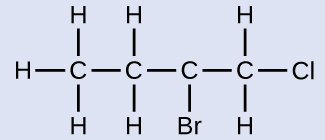
Solution
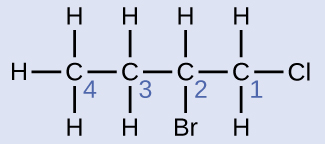
The four-carbon chain is numbered from the end with the chlorine atom. This puts the substituents on positions 1 and 2 (numbering from the other end would put the substituents on positions 3 and 4). Four carbon atoms means that the base name of this compound will be butane. The bromine at position 2 will be described by adding 2-bromo-; this will come at the beginning of the name, since bromo- comes before chloro- alphabetically. The chlorine at position 1 will be described by adding 1-chloro-, resulting in the name of the molecule being 2-bromo-1-chlorobutane.
Test Yourself
Name the following molecule:

Answer
3,3-dibromo-2-iodopentane
We call a substituent that contains one less hydrogen than the corresponding alkane an alkyl group. The name of an alkyl group is obtained by dropping the suffix -ane of the alkane name and adding -yl:

The open bonds in the methyl and ethyl groups indicate that these alkyl groups are bonded to another atom.
Branched hydrocarbons may have more than one substituent. If the substituents are different, give each substituent a number (using the smallest possible numbers) and list the substituents in alphabetical order, with the numbers separated by hyphens and no spaces in the name. So the molecule shown here is 3-ethyl-2-methylpentane.
If the substituents are the same, use the name of the substituent only once, but use more than one number, separated by a comma and put a numerical prefix before the substituent name that indicates the number of substituents of that type. Consider this molecule:
The longest chain has four C atoms, so it is a butane. There are two substituents, each of which consists of a single C atom; they are methyl groups. The methyl groups are on the second and third C atoms in the chain (no matter which end the numbering starts from), so we would name this molecule 2,3-dimethylbutane. Note the comma between the numbers, the hyphen between the numbers and the substituent name, and the presence of the prefix di– before the methyl. Other molecules—even with larger numbers of substituents—can be named similarly.
Example 2
Name the molecule whose structure is shown here:
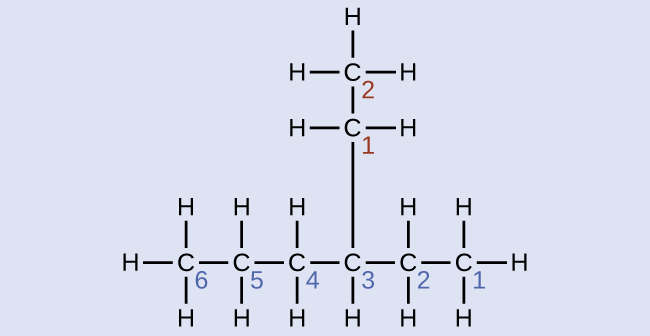
Solution
The longest carbon chain runs horizontally across the page and contains six carbon atoms (this makes the base of the name hexane, but we will also need to incorporate the name of the branch). In this case, we want to number from right to left (as shown by the blue numbers) so the branch is connected to carbon 3 (imagine the numbers from left to right—this would put the branch on carbon 4, violating our rules). The branch attached to position 3 of our chain contains two carbon atoms (numbered in red)—so we take our name for two carbons eth- and attach -yl at the end to signify we are describing a branch. Putting all the pieces together, this molecule is 3-ethylhexane.
Test Yourself
Name the following molecule:
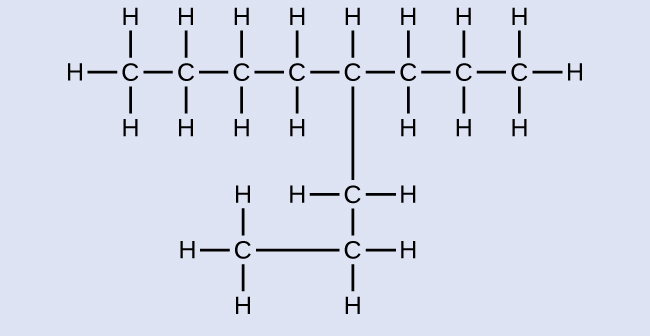
Answer
4-propyloctane
Example 3
Name this molecule.
Solution
The longest continuous carbon chain has seven C atoms, so this molecule is named as a heptane. There is a two-carbon substituent on the main chain, which is an ethyl group. To give the substituent the lowest numbering, we number the chain from the right side and see that the substituent is on the third C atom. So this hydrocarbon is 3-ethylheptane.
Test Yourself
Name this molecule.
Answer
2-methylpentane
Example 4
Name this molecule.
Solution
The longest chain has seven C atoms, so we name this molecule as a heptane. We find two one-carbon substituents on the second C atom and a two-carbon substituent on the third C atom. So this molecule is named 3-ethyl-2,2-dimethylheptane.
Test Yourself
Name this molecule.
Answer
4,4,5-tripropyloctane

Want more practice naming alkanes? Watch this brief video tutorial to review the nomenclature process.
Naming Alkenes
Ethene, C2H4, is the simplest alkene and is commonly called ethylene. The second member of the series is propene (propylene). The name of an alkene is derived from the name of the alkane with the same number of carbon atoms. The presence of the double bond is signified by replacing the suffix -ane with the suffix -ene. The location of the double bond is identified by naming the smaller of the numbers of the carbon atoms participating in the double bond:

Therefore when naming alkenes following IUPAC, you follow the same two rules for alkanes with modification to “rule 1” mentioned above.
Rule 1. Identify the longest chain of carbons which contains the double bond and its position (PREFIX-#-ENE). And when numbering the main chain, the double gets the lowest possible number.
Rule 2. Names and position of the substituents.
For example, this molecule is 2,4-dimethylhept-3-ene. Note the number and the hyphens that indicate the position of the double bond.
Recycling Plastics
Ethylene (the common industrial name for ethene) is a basic raw material in the production of polyethylene and other important compounds. Over 135 million tons of ethylene were produced worldwide in 2010 for use in the polymer, petrochemical, and plastic industries.
Polymers (from Greek words poly meaning “many” and mer meaning “parts”) are large molecules made up of repeating units, referred to as monomers. Polymers can be natural (starch is a polymer of sugar residues and proteins are polymers of amino acids) or synthetic [like polyethylene, polyvinyl chloride (PVC), and polystyrene]. The variety of structures of polymers translates into a broad range of properties and uses that make them integral parts of our everyday lives. Adding functional groups to the structure of a polymer can result in significantly different properties (see the discussion about Kevlar later in this chapter).
An example of a polymerization reaction is shown in Figure 2. The monomer ethylene (C2H4) is a gas at room temperature, but when polymerized, using a transition metal catalyst, it is transformed into a solid material made up of long chains of –CH2– units called polyethylene. Polyethylene is a commodity plastic used primarily for packaging (bags and films).
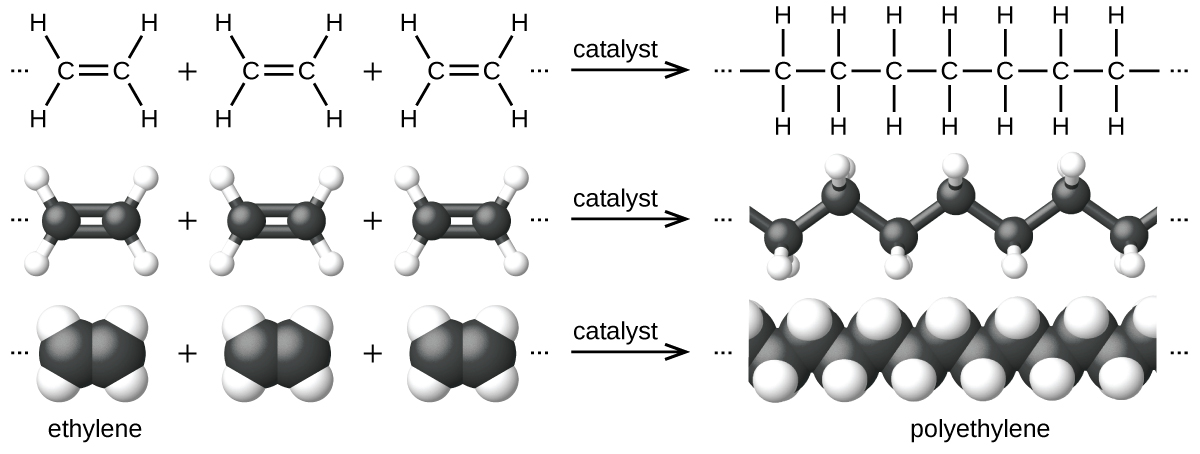
Polyethylene is a member of one subset of synthetic polymers classified as plastics. Plastics are synthetic organic solids that can be molded; they are typically organic polymers with high molecular masses. Most of the monomers that go into common plastics (ethylene, propylene, vinyl chloride, styrene, and ethylene terephthalate) are derived from petrochemicals and are not very biodegradable, making them candidate materials for recycling. Recycling plastics helps minimize the need for using more of the petrochemical supplies and also minimizes the environmental damage caused by throwing away these nonbiodegradable materials.
Plastic recycling is the process of recovering waste, scrap, or used plastics, and reprocessing the material into useful products. For example, polyethylene terephthalate (soft drink bottles) can be melted down and used for plastic furniture, in carpets, or for other applications. Other plastics, like polyethylene (bags) and polypropylene (cups, plastic food containers), can be recycled or reprocessed to be used again. Many areas of the country have recycling programs that focus on one or more of the commodity plastics that have been assigned a recycling code (see Figure 3). These operations have been in effect since the 1970s and have made the production of some plastics among the most efficient industrial operations today.
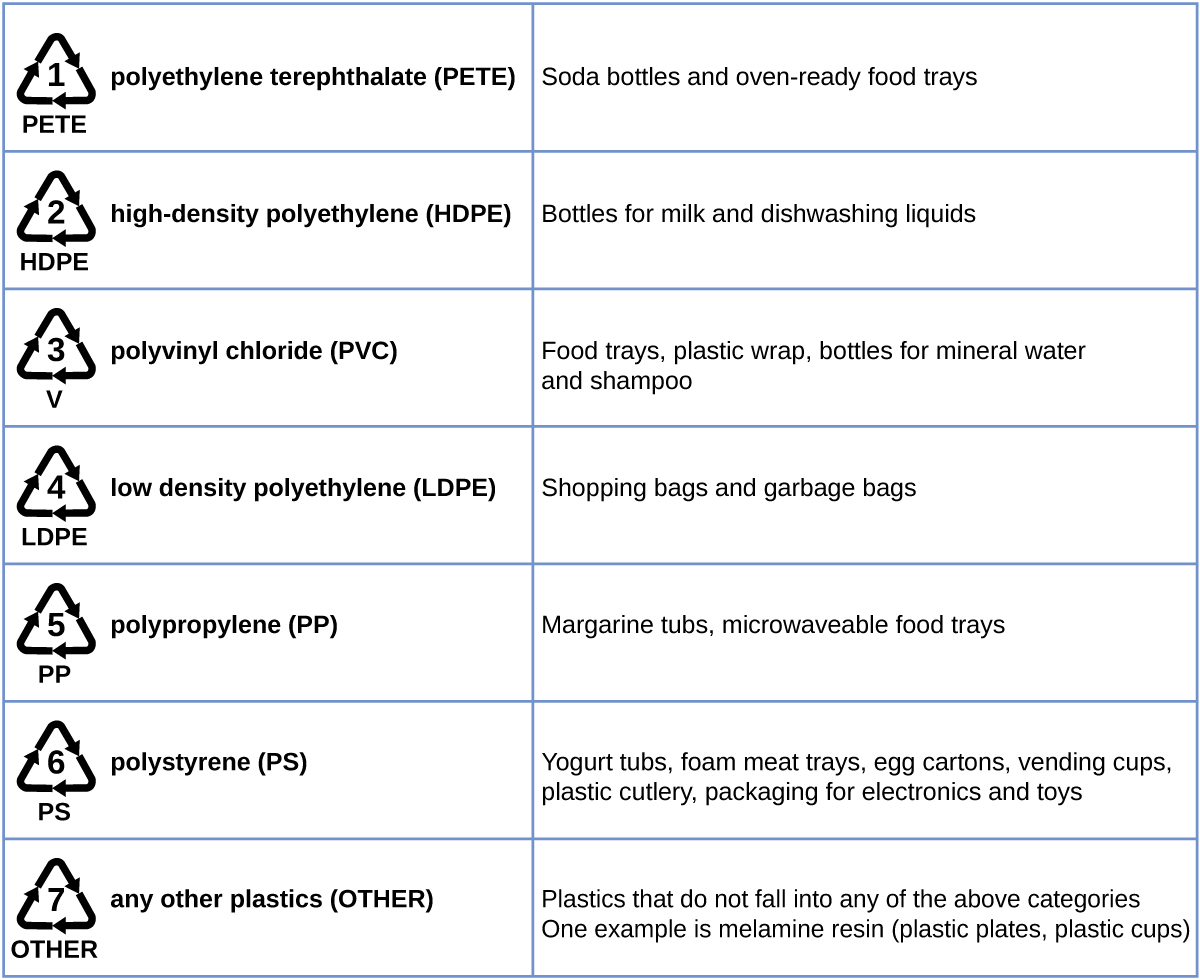
Once you master naming hydrocarbons from their given structures, it is rather easy to draw a structure from a given name. Just draw the parent chain with the correct number of C atoms (putting the double or triple bond in the right position, as necessary) and add the substituents in the proper positions. If you start by drawing the C atom backbone, you can go back and complete the structure by adding H atoms to give each C atom four covalent bonds.
From the name 2,3-dimethyl-4-propylhept-2-ene, we start by drawing the seven-carbon parent chain with a double bond starting at the third carbon:
We add to this structure two one-carbon substituents on the second and third C atoms:
We finish the carbon backbone by adding a three-carbon propyl group to the fourth C atom in the parent chain:
If we so choose, we can add H atoms to each C atom to give each carbon four covalent bonds, being careful to note that the C atoms in the double bond already have an additional covalent bond. Question: How many H atoms do you think are required? There will need to be 24 H atoms to complete the molecule.
Example 5
Draw the carbon backbone for 2,3,4-trimethylpentane.
Solution
First, we draw the five-carbon backbone that represents the pentane chain:
According to the name, there are three one-carbon methyl groups attached to the second, third, and fourth C atoms in the chain. We finish the carbon backbone by putting the three methyl groups on the pentane main chain:
Test Yourself
Draw the carbon backbone for 3-ethyl-6,7-dimethyloct-2-ene.
Answer
Naming Alkynes
The simplest member of the alkyne series is ethyne, C2H2, commonly called acetylene.
The IUPAC nomenclature for alkynes is similar to that for alkenes except that the suffix -yne is used to indicate a triple bond in the chain. For example, [latex]\text{CH}_3\text{CH}_2\text{C}\;{\equiv}\;\text{CH}[/latex] is called but-1-yne.
Therefore when naming alkynes following IUPAC, you follow the same two rules for alkanes with modification to “rule 1” mentioned above.
Rule 1. Identify the longest chain of carbons which contains the triple bond and its position (PREFIX-#-YNE). And when numbering the main chain, the triple bond gets the lowest possible number.
Rule 2. Names and position of the substituents
Example 6
Name the following molecule:

Solution
but-2-yne
Test Yourself
Name the following molecule:

Answer
pent-3-en-1-yne
Example 7
Name this molecule.
Solution
The longest chain that contains the C–C triple bond has six C atoms, so this is a hexyne molecule. The triple bond starts at the third C atom, so this is a hex-3-yne. Finally, there are two methyl groups on the chain; to give them the lowest possible number, we number the chain from the left side, giving the methyl groups the second position. So the name of this molecule is 2,2-dimethylhex-3-yne.
Test Yourself
Name this molecule.
Answer
2,3,4-trimethylpent-2-ene
Naming Arenes
The most commonly known arene is benzene.
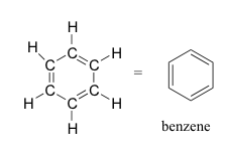
There are many derivatives of benzene. The hydrogen atoms can be replaced by many different substituents. The following are typical examples of substituted benzene derivatives:

Toluene and xylene are important solvents and raw materials in the chemical industry. Styrene is used to produce the polymer polystyrene. Toluene, xylene and styrene are common names for these compounds. The systematic way of naming these benzene derivatives is by following the the two rules:
Rule 1. Identify the arene ring (BENZENE).
Rule 2. Names and position (if more than one) of the substituents: If there are two or more substituents on a benzene molecule, the relative positions must be numbered. The substituent that is first alphabetically is assigned position 1, and the ring is numbered in a circle to give the other substituents the lowest possible number(s).
Therefore the systematic name for toluene is methylbenzene and for xylene is 1,2-dimethylbenzene.
Key Concepts and Summary
Hydrocarbons are organic compounds composed of only carbon and hydrogen. The alkanes are saturated hydrocarbons—that is, hydrocarbons that contain only single bonds. Alkenes and alkynes are unsaturated hydrocarbons. Alkenes contain one or more carbon-carbon double bonds. Alkynes contain one or more carbon-carbon triple bonds. Arenes, also known as aromatic hydrocarbons, contain ring structures with alternating single and double bonds.
The systematic methods of naming the various hydrocarbons follow a similar procedure and the names have three main parts:
1) specifying the information about the substituents,
2) specifying the information about the parent chain (or ring), and
3) the ending which specifies what functional group is present in the structure being named.
Alkanes: #-substituents–PREFIX+ANE
Alkenes: #-substituents–PREFIX-#-ENE
Alkynes: #-substituents–PREFIX-#-YNE
Arenes (specifically benzene derivatives): #-substituents–BENZENE
Exercises
1. Write the chemical formula and Lewis structure of the following, each of which contains five carbon atoms:
a) an alkane b) an alkene c) an alkyne
2. Name the following compounds:
 3. Write the Lewis structure and molecular formula for each of the following hydrocarbons:
3. Write the Lewis structure and molecular formula for each of the following hydrocarbons:
a) hexane b) 3-methylpentane c) hex-3-ene
d) 4-methylpent-1-ene e) hex-3-yne f) 4-methylpent-2-yne
4. Give the complete IUPAC name for each of the following compounds:
a) [latex]\text{CH}_3\text{CH}_2\text{CBr}_2\text{CH}_3[/latex]
b) [latex](\text{CH}_3)_3\text{CCl}[/latex]
c)

d) [latex]\text{CH}_3\text{CH}_2\text{C}\;{\equiv}\;\text{CH\;CH}_3\text{CH}_2\text{C}\;{\equiv}\;\text{CH}[/latex]
e)

f)

g) [latex](\text{CH}_3)_2\text{CHCH}_2\text{CH} = \text{CH}_2[/latex]
5. Butane is used as a fuel in disposable lighters. Write the Lewis structure for each isomer of butane.
6. Define hydrocarbon. What are the two general types of hydrocarbons?
7. Indicate whether each molecule is an aliphatic (open chain) or an arene. If it is aliphatic, identify the molecule as an alkane, an alkene, or an alkyne.
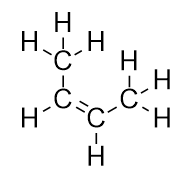
8. Indicate whether each molecule is an aliphatic or an arene. If it is aliphatic, identify the molecule as an alkane, an alkene, or an alkyne.
9. Name and draw the structural formulas for the four smallest alkanes.
10. Explain why you may see prop-1-ene written just as propene.
11. Name and draw the structural formula of each isomer of pentene.
12. Draw the structure of the product of the reaction of bromine with propene.
13. Draw the structure of the product of the reaction of hydrogen with but-1-ene.
14. How does a branched hydrocarbon differ from a normal hydrocarbon?
15. Name this molecule.
a) 3,4-diethyloctane
b) 2,2-dimethyl-4-propylnonane
26. Draw the carbon backbone for each molecule.
a) 4-ethyl-4-propyloct-2-yne
b) 5-butyl-2,2-dimethyldecane
27. The name 2-ethylhexane is incorrect. Draw the carbon backbone and write the correct name for this molecule.
Answers
1. There are several sets of answers; one is:
(a) [latex]\text{C}_5\text{H}_{12}[/latex]
 ;
;
(b) [latex]\text{C}_5\text{H}_{10}[/latex]
 ;
;
(c) [latex]\text{C}_5\text{H}_8[/latex]

2. 2-hexene and 2-methylpentane
3. (a) [latex]\text{C}_6\text{H}_{14}[/latex]
 ;
;
(b) [latex]\text{C}_6\text{H}_{14}[/latex]
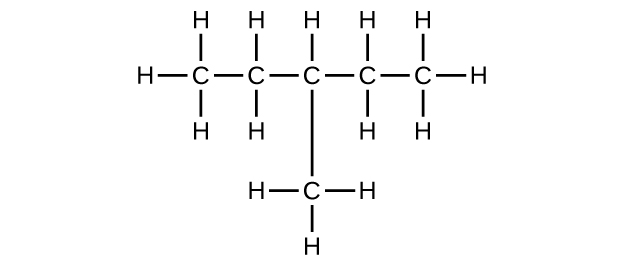 ;
;
(c) [latex]\text{C}_6\text{H}_{12}[/latex]
 ;
;
(d) [latex]\text{C}_6\text{H}_{12}[/latex]
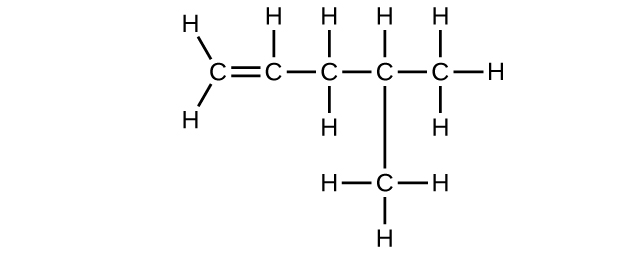 ;
;
(e) [latex]\text{C}_6\text{H}_{10}[/latex]
 ;
;
(f) [latex]\text{C}_6\text{H}_{10}[/latex]
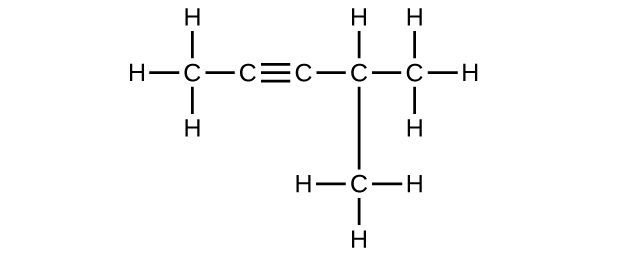
4. (a) 2,2-dibromobutane; (b) 2-chloro-2-methylpropane; (c) 2-methylbutane; (d) but-1-yne; (e) 4-fluoro-4-methyloct-1-yne; (f) 1-chloropropene; (g) 5-methylpent-1-ene
5.

6. an organic compound composed of only carbon and hydrogen; aliphatic hydrocarbons and aromatic hydrocarbons
7. a) aliphatic; alkane b) arene c) aliphatic; alkene
8. a) aliphatic; alkane b) aliphatic; alkene c) arene d) aliphatic; alkyne e) arene
f) aliphatic; alkene g) aliphatic; alkene h) arene i) aliphatic; alkyne
9.
10. The 1 is not necessary since the double bond is on the first carbon.
11.
12.
13.
 14. A branched hydrocarbon does not have all of its C atoms in a single row.
14. A branched hydrocarbon does not have all of its C atoms in a single row.
15. 3-methyl-hex-2-ene
16. 2,2,3-trimethylpentane
17. 4,4-dimethylpent-1-ene
18. 4,4-dimethylheptane
19. 2,4-dimethylpent-2-ene
20. hex-3-yne
21. 3,4-diethyloctane
22. 4,5-dimethylhept-3-ene
23. 1-bromo-4-chlorobenzene
24. 1-ethyl-2,3-dimethylbenzene
Glossary
alkane: molecule consisting of only carbon and hydrogen atoms connected by single (σ) bonds
alkene: molecule consisting of carbon and hydrogen containing at least one carbon-carbon double bond
alkyl group: substituent, consisting of an alkane missing one hydrogen atom, attached to a larger structure
alkyne: molecule consisting of carbon and hydrogen containing at least one carbon-carbon triple bond
aromatic hydrocarbon: cyclic molecule consisting of carbon and hydrogen with delocalized alternating carbon-carbon single and double bonds, resulting in enhanced stability
functional group: part of an organic molecule that imparts a specific chemical reactivity to the molecule
organic compound: natural or synthetic compound that contains carbon
saturated hydrocarbon: molecule containing carbon and hydrogen that has only single bonds between carbon atoms
skeletal structure or line structure: shorthand method of drawing organic molecules in which carbon atoms are represented by the ends of lines and bends in between lines, and hydrogen atoms attached to the carbon atoms are not shown (but are understood to be present by the context of the structure)
substituent: branch or functional group that replaces hydrogen atoms in a larger hydrocarbon chain
- This is the Beilstein database, now available through the Reaxys site (www.elsevier.com/online-tools/reaxys). ↵
- Peplow, Mark. “Organic Synthesis: The Robo-Chemist,” Nature 512 (2014): 20–2. ↵

